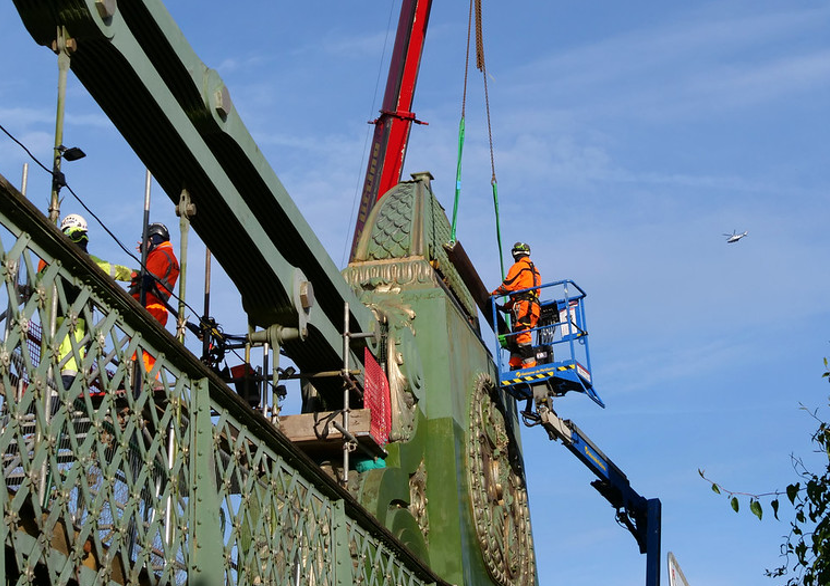
Policy D1
Delivery and implementation
The council will implement the policies and proposals of the Local Plan by:
a) working with stakeholders and partner organisations through a variety of fora and other arrangements, including resident working groups and designated neighbourhood forums.
b) preparing Supplementary Planning Documents, Area Planning Frameworks, Development Briefs, master plans and best practice guidance where necessary.
c) maintaining an Infrastructure Schedule (part of the Infrastructure Delivery Plan) that identifies the infrastructure projects and programmes that seeks to create the most benefits from development.
c) utilising development management powers, including pre-application discussions and involving partner organisations where appropriate.
e) having regard to the financial viability of development in the following ways:
a. plan-making
b. CIL charge-setting; and
c. negotiating Section 106 Agreements ('106s'), including for affordable housing
d. site specific circumstances including site specific infrastructure
e. site size, constraints and characteristics.
f) allocating council funding and seeking other monies for projects which support the Local Plan; and
g) preparing authority monitoring reports on an annual basis to review the effectiveness of policies and identifying alterations where necessary.
Stakeholders and partner organisations
12.0 Responsibility for the successful implementation of the policies within the Local Plan falls not only upon the council as Local Planning Authority and in some cases as the landowner or service provider, but also upon the council's partners and other stakeholders, including neighbouring boroughs, the Old Oak and Park Royal Development Corporation, the GLA and other public and private sector organisations, especially with regard to strategic matters.
12.1 Landowners and developers will be important partners in the regeneration of the borough. Much of the land in the regeneration areas is held by private landowners and their commitment and active involvement is required to implement the regeneration the borough needs. There are ongoing discussions with these key landowners and stakeholders to determine the way forward for development and the council has adopted or is preparing area frameworks for some of the identified regeneration areas. In some cases, there are opportunities to consider joint schemes with private landowners or developers holding adjacent or nearby sites which could involve joint ventures or special purpose vehicles, subject to applicable procurement legislation.
Infrastructure Delivery Plan
12.3 An Infrastructure Delivery Plan (IDP) is being prepared alongside the Local Plan. The IDP will set out the borough's key infrastructure requirements, anticipated costs and expected delivery based upon partnership working throughout the Local Plan process. The IDP is a 'live' document that the council will monitor and review on a regular basis to reflect the current circumstances and to inform the development management process. An Infrastructure Schedule contained in the IDP will set out an overview of the key infrastructure requirements necessary to support regeneration in the borough.
Development management
12.4 It will be through development management processes, including pre-application discussions and Resident Working Groups and designated Neighbourhood Forums that the council will seek to implement many of the policies and proposals in the Local Plan. The council will also consider, when appropriate, the use of compulsory purchase powers to enable land to be developed, redeveloped or improved to help deliver regeneration. The council will usually try to negotiate with the owner, but if the owner refuses to sell, the council can start the process that will allow it to buy the land or property.
Guidance documents
12.5 The council's pro-active planning approach to regeneration will be supported by a number of planning documents and detailed guidance. In particular, the council will prepare other Local Plan documents, Supplementary Planning documents (SPDs), Development Briefs, Master Plans and best practice guidance where necessary.
Funding sources
12.6 The council will allocate council funding and seek monies for projects which support the Local Plan. More detail on infrastructure funding will be provided in an Infrastructure Delivery Plan currently being prepared by the council. Much of the funding will be provided through development in the borough, namely through on-site development, the CIL and Section 106 agreements.
Monitoring
12.7 To enable the council to know whether the Local Plan policies and programmes for infrastructure are achieving their objectives and targets. Alongside the Local Plan, an IDP has been produced. This is considered to be a 'live' document that will be monitored on a regular basis to address infrastructure provision and delivery. The council will monitor policies and infrastructure delivery and prepare Authority Monitoring Reports (AMRs) on an annual basis.
12.8 Section 113 of the Localism Act 2011 sets out the requirements for AMRs. Regulation 34 of The Town and Country Planning (Local Planning) (England) Regulations 2012 provides further detail on these requirements which are also reflected in the National Planning Practice Guidance on Local Plans. The requirements are summarised here. The AMR must:
- identify the timetable for preparation and stages reached (including adoption and dates) for each Local Plan document or Supplementary Planning Document (SPD) listed in the council's Local Development Scheme (LDS), and the reasons for any slippage in achieving the timetable.
- identify the extent to which the council is, or is not, implementing policies in the Local Plan and, where policies are not being implemented, explain the reasons why and the steps intended to be taken to ensure that the policy is implemented.
- specify the council's progress in meeting targets for net additional dwellings or affordable dwellings for both the period in respect of which the report is made and the period since the policy was first published, adopted or approved.
- detail any made neighbourhood development orders or neighbourhood development plans.
- contain monitoring information required by the Community Infrastructure Levy (CIL) Regulations 2010 (as amended); and
- give details of what action the council has taken regarding the duty to cooperate.